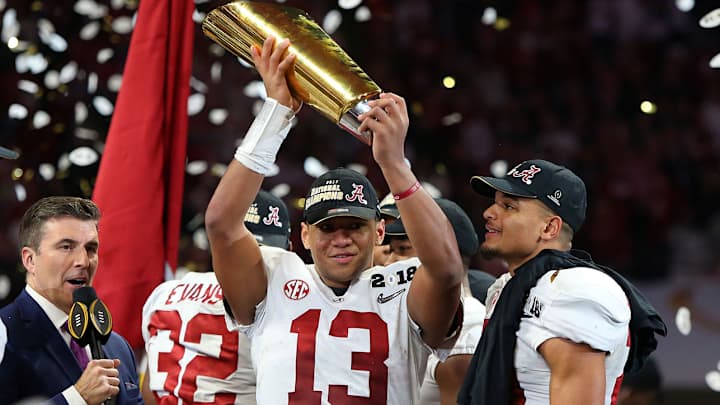How Does College Football Playoff Overtime Work?


The College Football Playoff National Championship game has only gone to overtime once in the playoff era—Alabama's 26-23 win over Georgia in the 2017-18 season. Georgia was also involved in the only CFP Semifinal game to go to overtime when that same year it took down Oklahoma in the Rose Bowl.
This year, there have been a few rule changes related to overtime in college football.
The first major rules change came in 1996 as the NCAA embraced the overtime format after decades of ties in impactful matchups.
Here's a brief breakdown of college football overtime rules for 2019.
What happens after a college football game is tied after four quarters?
The two teams will head to overtime if a game is tied after four quarters, but the college system is far different from the NFL. There is no clock in college football overtime, with each team receiving one possession per overtime period. If the score is tied after an OT period, the two teams will move to the next overtime until a winner is declared. First possession is determined by a coin flip, and the teams then rotate starting with possession in each overtime
How do teams begin possession in each overtime period?
There is no kickoff in college football overtime. Each team receives the ball at the opposing 25-yard-line with the chance to drive down the field for a field goal or touchdown.
How do teams attempt PATs?
Teams have the option to kick an extra point or attempt a two-point conversion in the first two overtimes. The two-point try is required for every touchdown scored in the third overtime and subsequent OT periods.
What changes have been made for 2019?
There has been one major adjustment to the overtime format for 2019. Teams will rotate two-point conversion tries beginning in the fifth overtime, eliminating possessions starting at the opposing 25-yard-line. Each offense will have just one chance to convert the two-point try before the other team gains possession.
